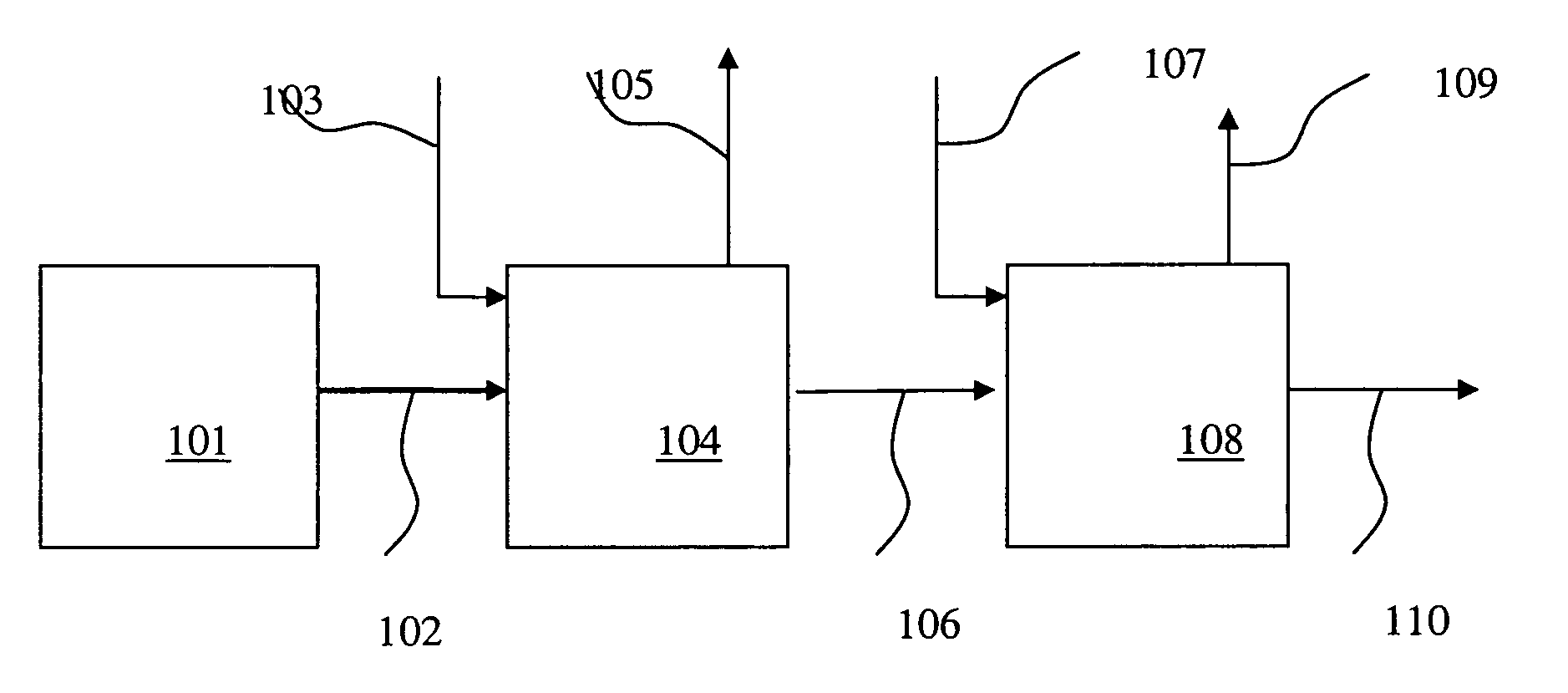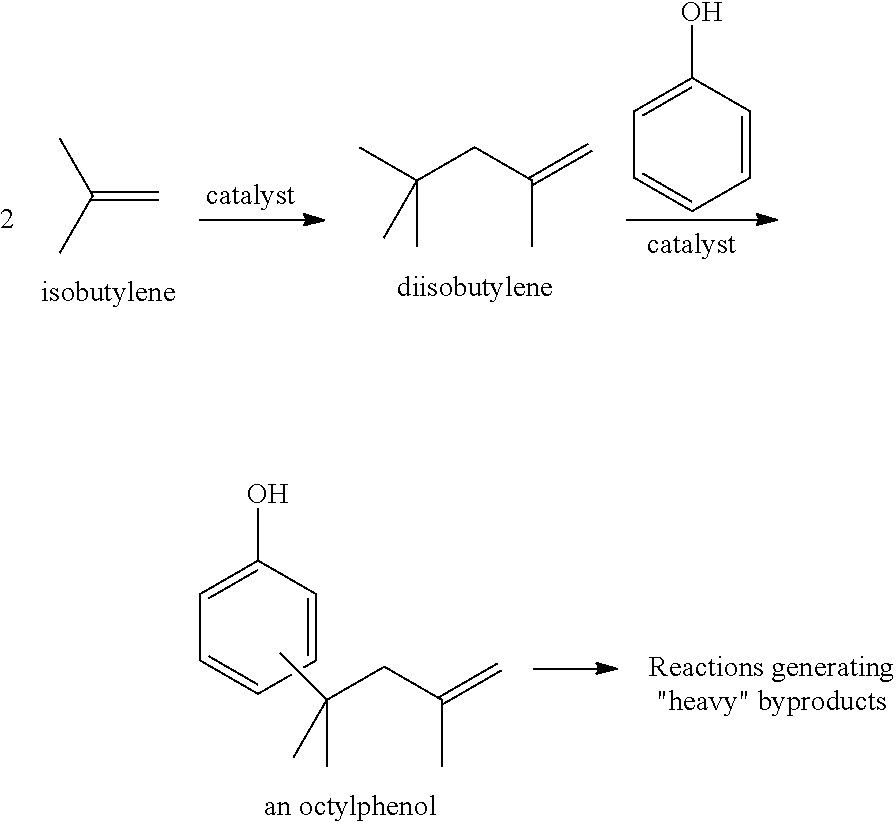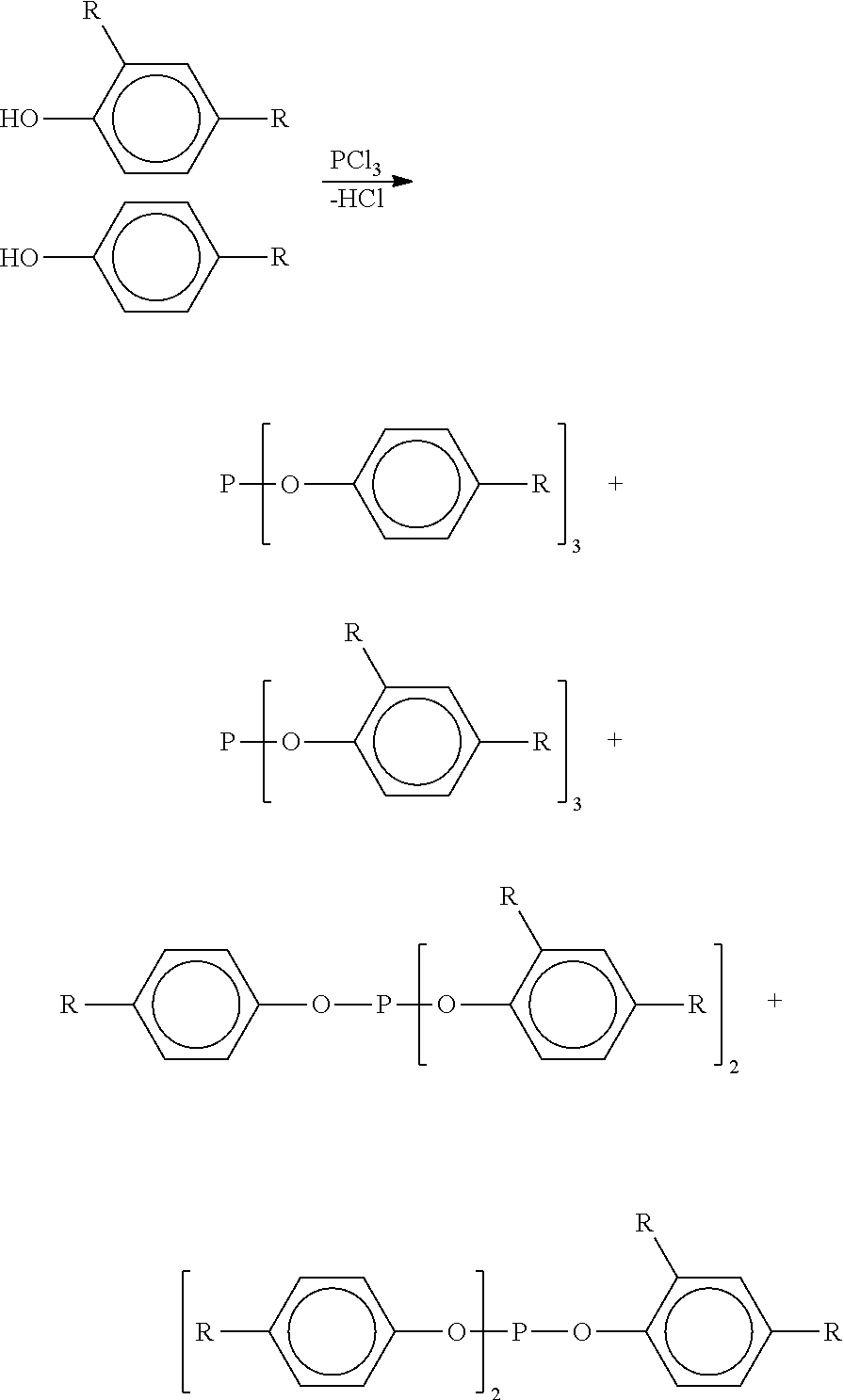Processes for forming alkylated aryl phosphite compositions from complex hydrocarbon streams
a technology of complex hydrocarbons and compositions, applied in the direction of organic chemistry, chemistry apparatus and processes, group 5/15 element organic compounds, etc., can solve the problems of increasing costs, reducing total production time, and inability to achieve similar isolation
- Summary
- Abstract
- Description
- Claims
- Application Information
AI Technical Summary
Benefits of technology
Problems solved by technology
Method used
Image
Examples
examples 1 & 2
Alkylation with Pure Olefin (Comparative)
[0141]For each of Examples 1 & 2, a 1 liter 5-necked jacketed vessel, heated by means of circulated oil via a Julabo heater / cooling circulator bath, was fitted with: (i) an overhead stirrer complete with stirring assembly fitted with a PTFE paddle blade stirring at 100 rpm; (ii) a Liebig condenser; and (iii) a digital thermocouple.
[0142]150 grams (1.59 mols) of molten phenol was charged under nitrogen to the vessel and heated to 100° C. When the phenol was at 100° C., 25.2 μL (0.28 mmols) of triflic acid was charged to the vessel. 177 grams (3.15 mols) of 2-methylpropene was introduced below the surface of phenol via a sinter glass frit at a uniform rate over 4 hours. The 2-methylpropene lecture bottle was connected to the glass frit using PVC tubing. Once the 2-methylpropene addition was completed, the reaction was held at an oil temperature of 100° C. for several hours.
examples 3 & 4
Alkylation with Olefin / Saturate Mixture
[0143]The procedure described in Examples 1 & 2 was repeated, but using a mixture of 2-methylpropene and 350 grams (3.15 mols) of butane. The gas line from the butane lecture bottle was spliced (using a T-piece) into the gas line from the 2-methylpropene lecture bottle such that the gases could be mixed prior to their introduction to the reaction vessel. A reduction in the amount of late eluting by-products (species with a retention times >20.5 mins) that were seen by GC, as shown in Table 6, compared to alkylation with purified olefins.
[0144]
TABLE 6GC Area %Example20.57 min20.91 min21.54 min24.2 min24.3 min25.52 minSum10.150.570.270.150.170.551.8620.390.560.270001.2230.170.250.090000.5140.210.260.090000.56
[0145]No detrimental affects on the rate of conversion or selectivity were observed when comparing 2-methylpropene diluted with butane with Examples 1 & 2. In addition, 2-methylpropene diluted with butane had the positive affect of reducing (...
PUM
| Property | Measurement | Unit |
|---|---|---|
| wt. % | aaaaa | aaaaa |
| wt. % | aaaaa | aaaaa |
| wt. % | aaaaa | aaaaa |
Abstract
Description
Claims
Application Information
 Login to View More
Login to View More - R&D
- Intellectual Property
- Life Sciences
- Materials
- Tech Scout
- Unparalleled Data Quality
- Higher Quality Content
- 60% Fewer Hallucinations
Browse by: Latest US Patents, China's latest patents, Technical Efficacy Thesaurus, Application Domain, Technology Topic, Popular Technical Reports.
© 2025 PatSnap. All rights reserved.Legal|Privacy policy|Modern Slavery Act Transparency Statement|Sitemap|About US| Contact US: help@patsnap.com



